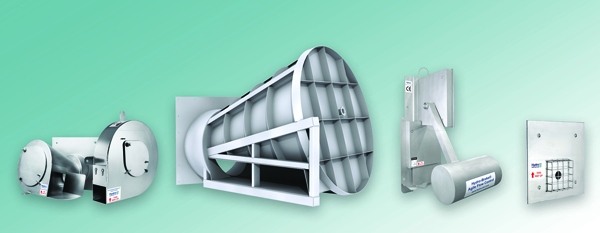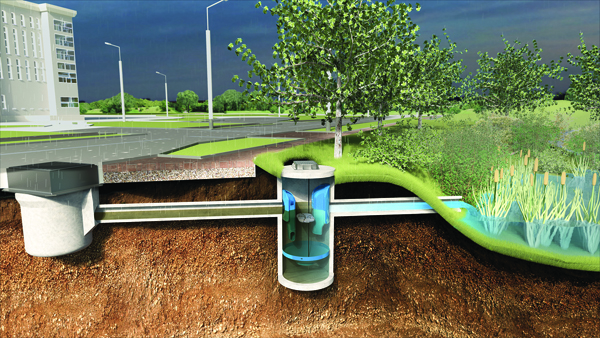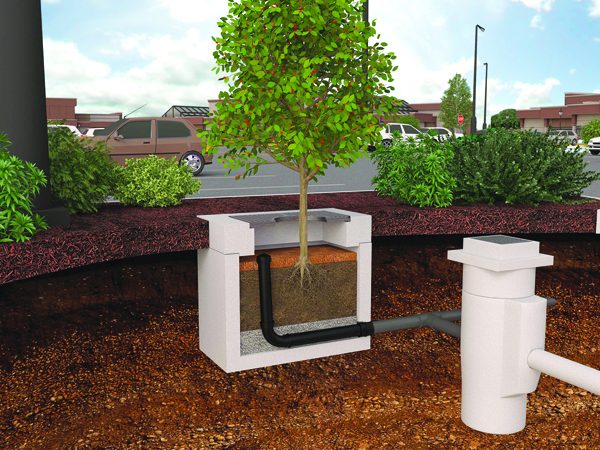One of the greatest modern challenges for housing developers is the sustainable management of surface water runoff, with more than 3.2 million properties at risk of flooding in England1.
The social and economic costs of flooding are high, and the Association of British Insurers believes that annual losses could reach £1.4 billion by 2040 – much of which is attributed to urban flooding. The surface water management action plan, standardised by Local Government, outlines key principles for residential designers and developers to comply with, to ensure sustainable drainage systems (SuDS) are
in place.
To be considered SuDS, drainage systems will need to meet the four pillars of water quantity, water quality, biodiversity and amenity. In January of this year the Government confirmed plans to ensure SuDs are adopted under Schedule 3 of the Flood and Water Management Act 2010 in England. A consultation to collect views on the new proposals will launch later this year to enable the new rules to be finalised before implementation in 2024. Schedule 3 has been implemented in Wales since January 2019 and a post-implementation review has been undertaken, and outcomes from this could well be considered as part of Defra’s implementation in England.
For housing designers and developers, the implementation of Schedule 3 is no doubt causing concern with a view that it could cause additional barriers and costs to overcome. In England SuDS have already been specified through the non-statutory technical standards for design, maintenance and operation of SuDS and many Local Authorities have their own guidelines for best practice. There is a complete ‘tool box’ of SuDS components available and, by combining different components, designers and developers can optimise their drainage designs to ensure that they meet the technical standards and still have an economically viable development.
With over 40 years’ experience, Hydro International has developed a range of SuDS components to provide quantity and quality control for SuDS in urban developments. It provides expertise to help customers manage complex stormwater issues and to design, install, operate and maintain effective SuDS. Often a mixture of natural SuDS with proprietary systems can work well to enhance the performance of a natural solution, such as a pond, or preserving valued community amenity areas, particularly in space-constrained urban areas.

Hydro-Brake® Optimum
Optimising flow control
To control and attenuate flows, sustainable engineering interventions seek to return surface water flows as closely as possible to pre-development or greenfield rates, replicating natural drainage paths and processes. Typically, this is achieved by using flow controls to limit the peak rate of discharge and storing the excess flows until they can safely be infiltrated or released into a watercourse or sewer. In the adoption of SuDS standards from local planning authorities, rising concern about the investment of SuDS has led to an increased demand for practical and cost-effective solutions supporting construction development and reducing overall project costs.
For example, the type of flow control used in the drainage design can have a significant effect on other parts of the system. A better performing flow control, which passes more flows earlier during rainfall events will require less storage volume to store flows in excess of the runoff limit. One such unit is the Hydro-Brake® Optimum, the most popular and flexible device in Hydro International’s Hydro-Brake® Flow Control range.
The Hydro-Brake® Optimum leverages more than 40 years of vortex flow control expertise to deliver exceptional flood protection and sustainable drainage. With no moving parts and no power requirements, the Hydro-Brake® Optimum provides reliable, low-maintenance, engineered flood management as part of green infrastructure developments.
For peace of mind, the performance, strength and durability of the Hydro-Brake® Optimum has been independently assessed, approved and certified by the British Board of Agrement and WRc to control stormwater or combined flows.
To assist engineers with sizing and design options, a free online design tool is available at hydro-int.com/design.
Other devices in the series include Hydro-Brake® Flood for large-scale flood protection at the watercourse level; Hydro-Brake® Agile, a float-activated device delivering a constant discharge for sites with highly constrained storage conditions; and Hydro-Brake® Orifice, a basic flow control for sites with generous storage space.

The Hydro-Brake® Flow Control Series
Storage / infiltration
If runoff from the site is limited using a flow control, then provision must be made to store the excess flow volume. Attenuating stormwater effectively in urban environments can be difficult due to lack of surface space or to keep a development economically viable. Hydro International’s Stormbloc® Optimum is a modular geocellular storage system that provides underground storage or infiltration. Being below ground, it can be used to preserve existing green spaces or enable amenity areas. Strong enough to be installed beneath high-traffic areas such as roads, pavements and parking areas it takes up less land than surface storage solutions such as a ponds or swales.

Downstream Defender® Select advanced vortex separator
Site specific stormwater treatment
Integral to sustainable drainage systems, The SuDS Manual’s Simple Index Approach (SIA) outlines the appropriate treatment of stormwater runoff, in consideration of anticipated pollution hazard levels. A key problem for developers is meeting the requirements set out by the SuDS Manual’s SIA while also considering how much land the appropriate solution will take, and how it will be maintained -
all while achieving optimal work performance and cost-efficiency.
The Downstream Defender® Select, the latest generation of hydrodynamic vortex separator, offers reliable standalone stormwater treatment, and the ability to work alongside other SuDS treatment solutions such as for pre-treatment of ponds, swales and constructed wetlands.
The Downstream Defender® Select’s customisable performance, extended range of chamber sizes, options for multiple inlets and variable connecting pipe sizes, allows engineers to tailor their drainage designs to meet specific pollutant removal standards in alignment to Simple Index Approach.
Maintenance is also a key consideration when designing sustainable drainage systems and the Downstream Defender® Select has been designed to be maintained safely and easily from the surface using a vacuum truck - no chamber entry is required. Adding Hydro-Logic® Smart Maintenance, which generates automated alerts when the unit requires emptying, removes the need for unnecessary inspection visits.
The Downstream Defender® Select can also help reduce land take and maintenance when used in conjunction with other SuDS solutions, such as a pond or infiltration tank. A pond with a Downstream Defender® Select upstream requires a smaller sediment forebay resulting in less land take because sediments will be removed before flows reach the pond. This will also ensure that its biodiversity value is protected. In the case of a storage tank, the
Downstream Defender® Select prevents sediments entering and settling in the tank, protecting the storage volume.
Another high amenity treatment solution is the Hydro Biofilter™, a highly effective biofiltration system that removes the need for engineers and contractors to compromise on either performance or amenity. Hydro Biofilter™ can remove litter and coarse debris down to particulate and dissolved metals and nutrients in one compact and aesthetically pleasing treatment system. To capture heavy sediment and reduce site footprints, whilst also cutting maintenance costs, the Up-Flo™ Filter advanced stormwater treatment system delivers multiple treatment stages in one device.

Hydro Biofilter™
To find out more about how Hydro International can help you design, manage and monitor SuDS to new regulations, visit hydro-int.com.
1 Source: UK Government Policy Paper: Surface water management: a government update
Images © Hydro-Int
- Log in to post comments















